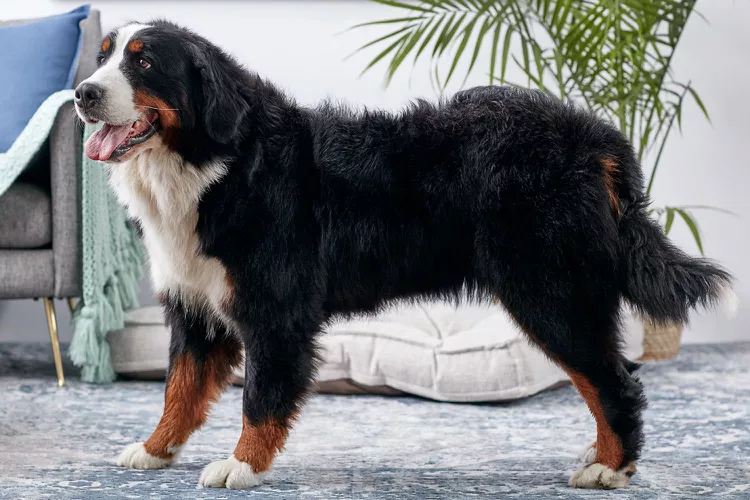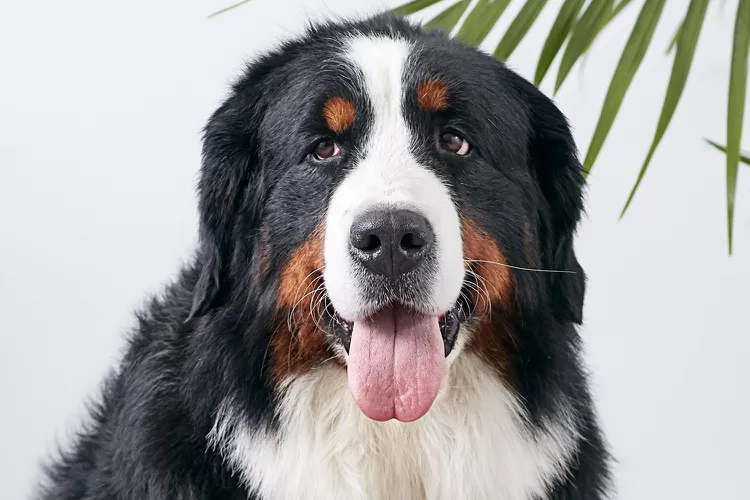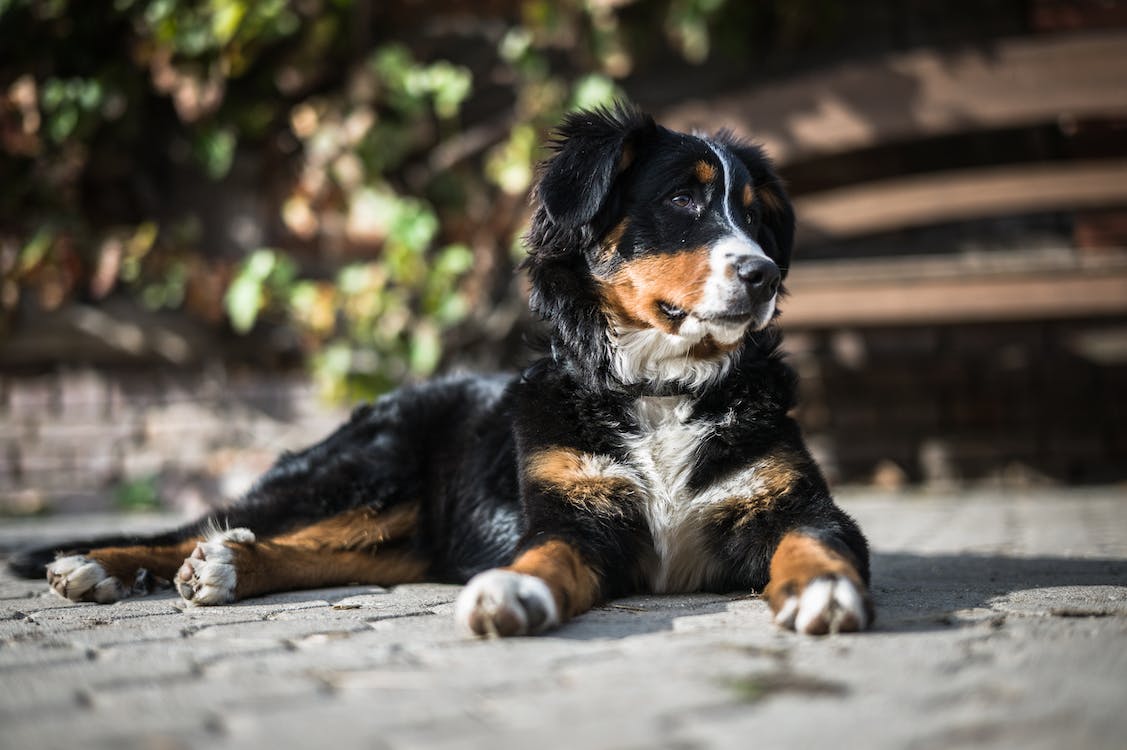The Bernese mountain dog is a large Swiss working dog breed with a multicolored, medium-length coat. These dogs, often known as Berners, may be devoted and caring companions and are usually good around children and other pets.
They are fun and energetic, but not exhausting, and can be protective but not violent. Despite their size, they are not as terrifying as some other huge dogs due to their joyful smiles and overall pleasant temperament.
They can be barkers, and they shed a lot, so if you decide to add a Berner to your household, you should be prepared for regular grooming sessions. They are also not a hypoallergenic breed of dog.
Characteristics of the Bernese Mountain Dog
Bernese mountain dogs have a generally pleasant attitude. Their compassionate disposition and drive to please are characteristics of their temperament.
They can be open to meeting people and are very affectionate with their families if properly socialized. They are protective and make excellent watchdogs, though some might bark excessively.
Berners are bright and trainable dogs, and while every dog should begin obedience training as a puppy, it is especially crucial with a large breed dog like the Bernese Mountain Dog.
Although friendly, these dogs can be active and enthusiastic, and due to their size and weight, they may accidently knock over a child, or even an adult, if they jump up in greeting or become very energetic while playing.
Berners dislike being left alone for lengthy periods of time due to their outgoing personality and dedication to their families. If you work long hours and want a dog who can be left alone at home, this is not the breed for you.
History of the Bernese Mountain Dog
The Bernese mountain dog evolved in Switzerland, near the town of Berne, which bears its name. Its forefathers arrived in the area thousands of years ago and descended from Roman mastiffs, among other dogs.
The Berner is now one of four types of Swiss mountain dogs, distinguished by its longer and silkier coat. The Greater Swiss mountain dog, Entlebucher mountain dog, and Appenzeller mountain dog are the other three kinds.
These dogs were used to drive animals, guard farms, and pull big cargo in the 1800s. They were also devoted companions to their families.
The breed’s popularity fell around the end of the 1800s as machines replaced them in much of their tasks. However, this prompted clubs to form in order to preserve the species and resurrect its popularity.
Berners immigrated to the United States in the early 1900s. The breed was initially recognized by the American Kennel Club in 1937.
Because of their friendliness, reasonable energy level, and beautiful looks, they are now consistently one of the most popular dog breeds in the country.

Bernese Mountain Dog Care
To be happy and healthy, Bernese mountain dogs require moderate exercise, as well as frequent training and socializing. Their grooming is quite simple, but be prepared for a lot of stray fur and sometimes torrents of drool.
- The 15 Most Demanding Dog Breeds
- Young Adult Dog Breeds Top 10
- The Sharpest Pups Unveiling the Smartest Dog Breeds
- Zodiac Dog Breeds
Exercise
Berners have a moderate level of activity and require space for their large bodies to move and play. Aim for at least 30 minutes of moderate-intensity exercise per day, such as brisk walks, treks, and fetch games.
Berners are athletic dogs who may participate in dog sports like obedience, agility, tracking, and carting. This will assist to cognitively and physically push them, and it will be a lot of fun for you both.
In general, these dogs thrive in homes with a yard. If you live in an apartment or a house without a yard, make sure your Bernese Mountain Dog gets daily outdoor time in the form of a long walk, a trip to the dog park, a session of doggie daycare, or a strenuous game of fetch the ball or Frisbee.
Your Berner would most likely enjoy playdates with other friendly and outgoing dogs, as long as they are of similar size and strength.
Grooming
The Berner has a double coat that repels dirt and debris well (a shorter undercoat coupled with a longer outer coat). However, the coat sheds a lot.
Brush your dog at least once a week to remove loose fur and avoid mats and tangles. In addition, shedding tends to increase when the weather changes in the spring and fall, and daily brushings may be required to keep up with all the loose fur.
Begin brushing your Berner as a puppy to get it used to regular grooming; many dogs will even look forward to grooming sessions if you start when they are small.
Bathe your dog every month or so, depending on how dirty it becomes. Every month, check to determine if it requires a nail trim.
Also, check your dog’s ears once a week to determine if they need to be cleaned. Examine the ears for debris, as well as any redness, swelling, or odor.
Ear infections are more common in dogs with floppy ears, such as the Bernese Mountain Dog, than in dogs with upright ears.
Finally, while many Bernese mountain dogs drool seldom, those with slack jowls might drool profusely. That slobber can get on the dog, the floor, and you.
So, if you have a drooler, have a cleaning cloth handy to prevent drool from becoming embedded in your dog’s fur.
As with any dog, brush your Berner’s teeth on a regular basis to prevent tartar formation, which can contribute to gum disease.
Training
Bernese mountain dogs are intelligent and eager to please, which makes training them a breeze. When your dog is a puppy, begin basic obedience and socialization by teaching it to sit, stay, and lie down on command.
This is especially crucial for a huge breed like a Berner, because adults are strong and difficult to handle if they haven’t learnt their manners.
To increase your dog’s comfort and confidence, aim to expose it to a variety of people, other animals, and circumstances.
Berners react well to consistent, positive training methods like clicker training. They are susceptible to harsh corrections and may shut down if subjected to such instruction.
And, like many other large-breed dogs, they take longer to mature physically and mentally, so be patient with your pet and remember that numerous brief training sessions each day—just five minutes or so—are more effective than one long session.
Common Health Issues

Bernese mountain dogs have relatively short lifespans when compared to many other smaller breeds, which should be considered before bringing one home. The Berner, like many other breeds, is prone to specific inherited conditions1, such as:
- Hip and elbow dysplasia is a hereditary defect in the development of the joints.
- Blood problems, such as Von Willebrand’s disease, occur when the blood fails to clot properly.
- malignancy, particularly malignancy that damages white blood cells
- Degenerative eye disease progressive retinal atrophy
- Bloat is a potentially fatal disorder in which the stomach bloats and twists as a result of eating too soon.
Food and Nutrition
Always have fresh water on hand for your dog, and choose a high-quality, nutritionally balanced canine diet. Berner puppies, in particular, will benefit from a large breed diet.
- The 15 Most Demanding Dog Breeds
- Young Adult Dog Breeds Top 10
- The Sharpest Pups Unveiling the Smartest Dog Breeds
- Zodiac Dog Breeds
These diets provide the necessary nourishment to promote slow and steady growth, which aids in the prevention of joint problems and other disorders.
The majority of owners feed their pets twice a day. Consult your veterinarian about diet and quantity to ensure your dog is eating healthily.
Also, make sure that treats and other extra food do not cause your dog to overeat and become overweight. Excess weight can put a strain on these enormous canines’ joints and contribute to other health issues.


My wife and I had a Beriner she was so loving we had her for almost 12 years she was kind of protective with anyone that came close to my wife ,very good as a watch dog but would not attack anyone,loved to play ball ,I taught her to play hide and go seek she loved that she was so loving we miss her